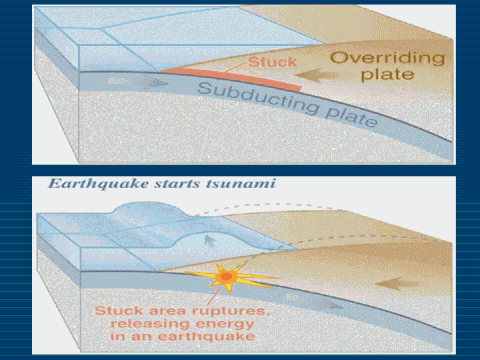| front |1 |2 |3 |4 |5 |6 |7 |8 |9 |10 |11 |12 |13 |14 |15 |16 |17 |18 |19 |20 |21 |22 |23 |24 |25 |26 |27 |28 |29 |30 |31 |32 |33 |34 |35 |36 |37 |38 |39 |40 |41 |42 |43 |44 |45 |46 |47 |48 |review |
 |
Introduction: How an earthquake happens? In geologic terms, Plate is one of the very large pieces of rock that form the earth’s surface and move slowly. Subduction zone is the place where two lithosphere plates come together, one riding over the other. Most volcanoes on land occur parallel to and inland from the boundary between the two plates. One of the many tectonic plates that make up Earth’s outer shell descends, or "subducts," under an adjacent plate. This kind of boundary between plates is called a "subduction zone." When the plates move suddenly in an area where they are usually stuck, an earthquake happens. Citation source: http://pubs.usgs.gov/circ/c1187/ Notice: You can find the definitions of geologic/earthquake terms at the following addresses. They may help you, if you are not a geologist! Earthquake glossary http://earthquake.usgs.gov/4kids/eqterms.html#oceanic http://www.geophys.washington.edu/SEIS/PNSN/INFO_ Geologic Terms http://www.geotech.org/survey/geotech/dictiona.html#sectS |